#soconusco
Text

A Toltec plumbate head effigy vessel from Soconusco (Chiapas, Mexico), ca. 1000 to 1200 AD.
Learn more / Daha fazlası
Plumbate Ware
https://www.archaeologs.com/w/plumbate-ware/
#archaeologs#archaeology#archaelogical#dictionary#history#toltec#plumbate#plumbate ware#soconusco#chiapas#mexico#ceremonial#pottery#art#arkeoloji#tarih#sanat
111 notes
·
View notes
Text
Se buscan amistades con alberca y aire acondicionado
¡Saquen las ‘miches’! El ambiente se mantendrá caluroso a extremo caluroso durante los próximos días.
¡Saquen las ‘miches’! El ambiente se mantendrá caluroso a extremo caluroso durante los próximos días.
En los siguientes días un sistema anticiclónico y el calor ganado de la superficie, favorecerá que el ambiente se mantenga muy caluroso a extremo caluroso, informó el Sistema Estatal de Protección Civil.
Las regiones Valles Zoque, Metropolitana y Frailesca presentan condiciones atmosféricas muy…

View On WordPress
#chiapas capital#chiapas cultura#chiapas de corzo#chiapas información#chiapas mapa#chiapas méxico#chiapas municipios#chiapas sin censura facebook#chiapas turismo#chiapas.gob.mx#clima#CONAGUA#Incendios#metropolitana#oaxac#Proteccion Civil#soconusco#Valles Zoque
0 notes
Text
𝗖𝗨𝗔𝗨𝗛𝗧É𝗠𝗢𝗖 𝗕𝗔𝗥𝗨𝗖𝗛 𝗖𝗨𝗦𝗧𝗢𝗗𝗜𝗢 𝗥𝗘𝗔𝗛𝗔𝗕𝗜𝗟𝗜𝗧𝗔 𝗬 𝗘𝗡𝗧𝗥𝗘𝗚𝗔 𝗔𝗚𝗘𝗡𝗖𝗜𝗔 𝗠𝗨𝗡𝗜𝗖𝗜𝗣𝗔𝗟 𝗘𝗡 𝗟𝗔 𝗖𝗢𝗠𝗨𝗡𝗜𝗗𝗔𝗗 𝗗𝗘 𝗟𝗔 𝗩𝗜𝗥𝗚𝗘𝗡.
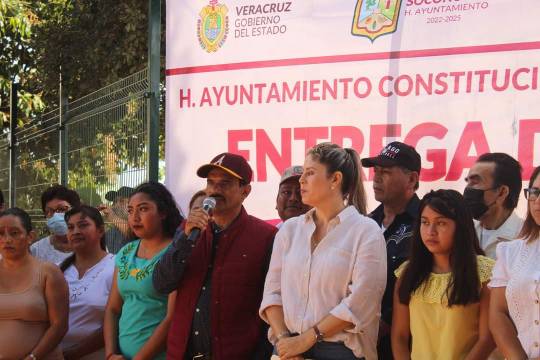
View On WordPress
0 notes
Text
208. La bestia negra del Soconusco.
0 notes
Photo
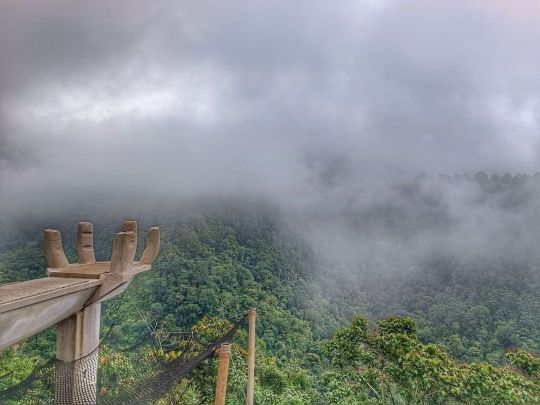
A #1500 metros sobre el nivel está "la mano de Dios" ubicada en el municipio de Unión Juárez o mejor conocido por los viajeros como "la suiza chiapaneca" un pueblo fronterizo a las faldas del volcán #Tacana en donde se produce café, cacao, papá y flores de altura. En la zona se pueden apreciar diferentes tipos de vegetación de la sierra madre desde la selva alta, bosques de pino, selva de niebla, zacatonal y páramo de altura. . . . . . . . . . . . . . . . . . . . . . . . . . . . . . . . . . . . . . . . . . . . . #igers #paisaje #lavidaesunpicnic #mexico #iger #sky #indigena #mexicomagico #mountains #vulcano #volcan #tacana #Chiapas #Soconusco #travelmexico #viajamexico #nubes #sierramadre https://www.instagram.com/p/CfEbxU-IMXk/?igshid=NGJjMDIxMWI=
#1500#tacana#igers#paisaje#lavidaesunpicnic#mexico#iger#sky#indigena#mexicomagico#mountains#vulcano#volcan#chiapas#soconusco#travelmexico#viajamexico#nubes#sierramadre
0 notes
Text
FIESTAS SEPTEMBRINAS: ¡VIVA AMÉRICA! ¡ABAJO EL MAL GOBIERNO!
Algunas notas sobre la independencia del país.
Han pasado doce días y ni me he enterado. Mientras tanto, México celebró las fiestas septembrinas o el aniversario de su independencia: una de las festividades más lindas del mundo. La Revolución Mexicana inició oficialmente el 16 de septiembre de 1810, tras el conocido "Grito de dolores". Cada año, los mexicanos y mexicanas celebran este día con comida y bebida, y se reúnen a medianoche en el zócalo para recordar que, un día, quisieron ser libres.
"La Marcha Zacatecas", o segundo himno de México, constituye otro de los más preciados símbolos nacionales. Es el producto de un desafío entre los compositores Codina y Villapando, saliendo, al principio, vencedor el primero. Originalmente, la pieza estaba compuesta para arpa, pero Villapando se encargó de su adaptación para instrumentarla. Así, cuando Codina escuchó la nueva versión, exclamó con lágrimas en los ojos:
— ¡No creía que fuera tan linda!
A lo que Villapando, respondió:
— Tú me la entregaste desnuda, yo nomás la vestí.
Esta canción, además de haber unido a dos contrincantes por una causa común, se convirtió en el himno de la división del ejército de Pancho Villa tras la decisiva victoria de la Batalla de Zacatecas.
Chiapas festejó por partida doble, pues el 14 de septiembre de 1824 se anexionó formalmente como estado federal de México. La última región en unirse fue la del Soconusco...
¡Quién hubiera estado allí para tomarse un tequila!...
En el vídeo de aprecia el desfile realizado en La Ciudad de México por el centenario...
#mexicomaravilloso#mexicomagico#independencia#15 de septiembre#libertad#notas en español#cosas que escribo
20 notes
·
View notes
Text
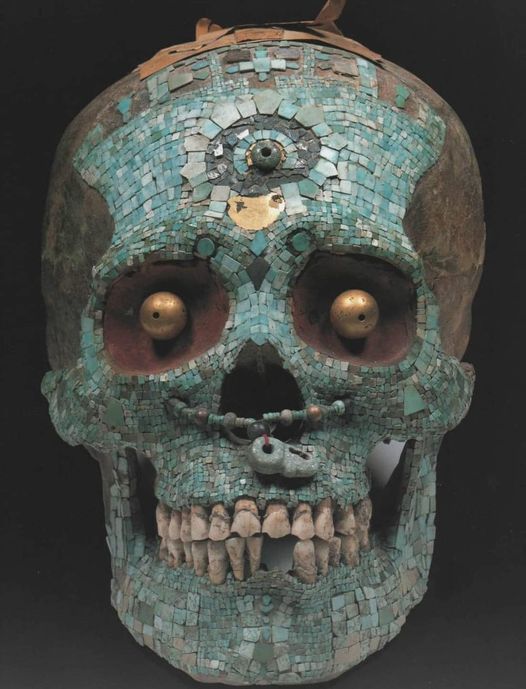
Cráneo de Tonalá recubierto de mosaico turquesa, con ojos de oro y adorno de jade en la frente. Azteca, periodo Postclásico (900-1519 d.C.), Museo Arqueológico del Soconusco.
A skull from Tonalá covered with turqoise mosaic, with gold eyes and a jade ornament in the forehead. Aztec, Postclassic period (900-1519 AD), Archeological museum of Soconusco.
7 notes
·
View notes
Text

An Aztec skull from Tonalá covered with turqoise mosaic, gold eyes and a jade ornament in the forehead. 1300-1521 CE, now housed at the Archeological Museum of Soconusco in Mexico.
1 note
·
View note
Text
Beliefs of religions/followers
Ayahuasca
youtube
Ayahuasca is a South American psychoactive brew, traditionally it's used by Indigenous cultures and folk healers in the Amazon and Orinoco basins for spiritual ceremonies, divination, and healing a variety of psychosomatic complaints.
The brew was originally used for spiritual and religious purposes by ancient Amazonians tribes to communicate with their god and is still used as a sacred beverage by some religious communities in Brazil and North America, these also included Santo Daime.
Olmecs
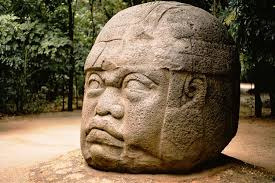
They were the earliest known major Mesoamerican civilization. This followed a progressive development in Soconusco, as they occupied the tropical lowlands of the modern-day Mexican states of Veracruz and Tabasco.
The Olmecs believed that there were three tiers of existence: they physical realm they inhabited, an underworld and a sky realm, this was the home of most of the gods. Their world was bound together by four cardinal points and natural boundaries such as rivers, the oceans and mountains.
Egyptians
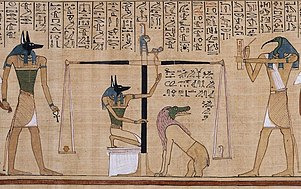
Egyptians are an ethnic group that are native to the Nile Valley in Egypt. The Egyptians identity is closely tied to geography.
The Ancient Egyptians were polytheistic (believed in more than one god) and are thought to of had thousands of gods and goddesses. Their beliefs in these gods/goddesses dictated how they lived their lives, how they treated others, how they farmed and worked and all their beliefs about the afterlife.
0 notes
Text
Nuestro proveedor
Es originario de la región de Soconusco, Chiapas.
Esta región posee características naturales muy particulares las cuales nos permiten el desarrollo y producción del producto, así mejorando su calidad.
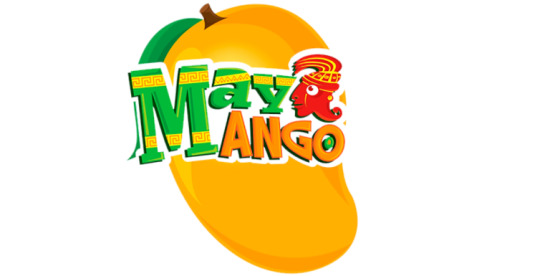
1 note
·
View note
Text
𝐍𝐮𝐞𝐬𝐭𝐫𝐨 𝐩𝐫𝐨𝐯𝐞𝐞𝐝𝐨𝐫
Es originario de la región del Soconusco, Chiapas.
Esta región posee características naturales muy particulares que permiten el desarrollo y la producción del fruto.
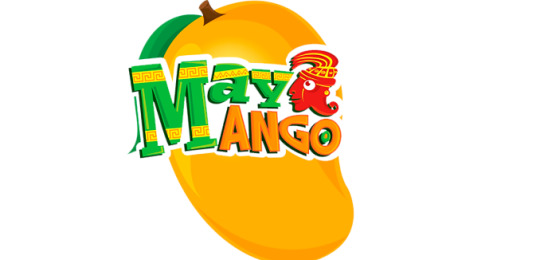
0 notes
Text
Soconusco, el eterno verdor
Es el ombligo del mundo mesoamericano, filón vanguardista de vocación cosmopolita, mezcla de culturas; es el corazón de la naturaleza, cuna de árboles gigantes que rosan el cielo.
Es el ombligo del mundo mesoamericano, filón vanguardista de vocación cosmopolita, mezcla de culturas; es el corazón de la naturaleza, cuna de árboles gigantes que rosan el cielo.
Al sur de la Sierra Madre de Chiapas convergen historia cultura y economía.
Es el ombligo del mundo mesoamericano, filón vanguardista de vocación cosmopolita, mezcla de culturas.
Soconusco o Xoconochco en lengua…

View On WordPress
#chiapas capital#chiapas clima#chiapas de corzo#chiapas información#chiapas lugares turisticos#chiapas mapa#chiapas méxico#chiapas municipios#chiapas sin censura facebook#chiapas turismo#soconusco chiapas#soconusco chiapas mapa#soconusco logo#soconusco mapa#soconusco region#soconusco significado#soconusco tuxtla#soconusco veracruz#soconusco wikipedia#soconusco zaragoza
0 notes
Text
𝗜𝗡𝗦𝗧𝗔𝗟𝗔 𝗖𝗢𝗡𝗦𝗘𝗝𝗢 𝗠𝗨𝗡𝗜𝗖𝗜𝗣𝗔𝗟 𝗗𝗘 𝗗𝗘𝗦𝗔𝗥𝗥𝗢𝗟𝗟𝗢 𝗥𝗨𝗥𝗔𝗟 𝗦𝗨𝗦𝗧𝗘𝗡𝗧𝗔𝗕𝗟𝗘 𝗦𝗢𝗖𝗢𝗡𝗨𝗦𝗖𝗢
𝗜𝗡𝗦𝗧𝗔𝗟𝗔 𝗖𝗢𝗡𝗦𝗘𝗝𝗢 𝗠𝗨𝗡𝗜𝗖𝗜𝗣𝗔𝗟 𝗗𝗘 𝗗𝗘𝗦𝗔𝗥𝗥𝗢𝗟𝗟𝗢 𝗥𝗨𝗥𝗔𝗟 𝗦𝗨𝗦𝗧𝗘𝗡𝗧𝗔𝗕𝗟𝗘 𝗦𝗢𝗖𝗢𝗡𝗨𝗦𝗖𝗢
Soconusco, Ver., a 24 de Noviembre del 2022.
El alcalde Lic. Cuauhtémoc Baruch Custodio tomó protesta como presidente del Consejo Municipal de Desarrollo Rural Sustentable (Comuders) y la C. Fátima de la Luz Nolasco Hidalgo como suplente, con el objetivo de implementar diversos proyectos con base a las necesidades del campo soconusqueño.
Juan Hernandez Montiel encargado del Centro de Apoyo al…
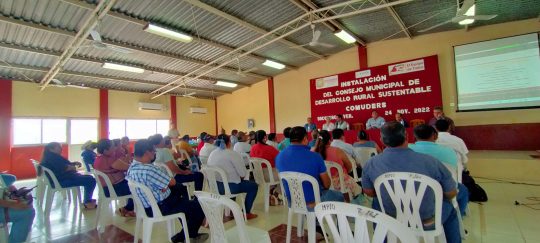
View On WordPress
0 notes
Text
Cacao in Mesoamerican Society
Chocolate is arguably the most popular confection in the western world. The Swiss alone consume an average of 19.8 pounds of chocolate per person annually. However, chocolate wasn’t always a mass produced confectionery. For centuries, chocolate was produced in small quantities for a select group of people. Cacao’s botany resulted in cacao and chocolate being used to reinforce social hierarchies and connect humans with the gods.
Cacao’s botany had unique social, political, economic, and societal implications for Mesoamerica. However, before discussing cacao’s effects on Mesoamerican societies, it is important to understand the origin of cacao cultivation and nature of cacao production. Cacao was first cultivated by the Barra people of Soconusco, Mexico, a civilization that predates the Olmec; the Olmec then perfected the processing of chocolate, and this process spread to other civilizations. Cacao is particularly difficult to cultivate. For starters, cacao only grows within 20° of the equator in a temperature range of 60℉ and 95℉; furthermore, cacao trees can only grow in shade, and must be planted under larger trees for protection against the Sun. After some time, cacao trees will start to produce flowers; only 3 of every 1,000 flowers on a cacao tree will become cacao pods. Once the cacao pods are mature, they must be delicately harvested by a large workforce, using machetes to carefully separate the pods from their roots. After being harvested, the cacao pods are cut open, revealing the cacao beans, the component used to make chocolate. Cacao beans must undergo a series of steps to be consumable, including fermentation, drying, roasting, and winnowing. First, cacao beans are left to ferment for several days to remove the pulp from the beans. Next, the beans are dried out in the Sun; the length of this drying period depends on the weather. After being dried, the beans are roasted. Next, the beans are winnowed; winnowing is the process in which the edible cacao nibs are separated from the inedible shells. Finally, the nibs are ground and blended; this resulting liquid, called chocolate liqueur, is molded into the desired shape, creating chocolate. The limited growing region and intensive processing of cacao meant that chocolate in Mesoamerica was a limited commodity.
As stated earlier, cacao’s botany led to it being a limited good in Mesoamerican societies. This, in turn, resulted in cacao being used to reinforce societal hierarchies. As cacao was a limited good, only nobles could readily afford it. Chocolate was also difficult and time consuming to prepare; instead of producing the chocolate themselves, nobles had servants prepare their hot chocolate beverage. To further show off their wealth, nobles had their chocolate drinking vessels intricately decorated with images depicting cacao being served to nobles and the gods. The image below is an example of how chocolate was used to reinforce social hierarchies. In the painting, the man serving the chocolate is kneeling, while the man consuming the chocolate is sitting on a throne, showing a class difference between the two. Historians know this beverage is chocolate due to the foam on the top of the drink, as various accounts describe Mesoamerican chocolate as being a frothy drink.
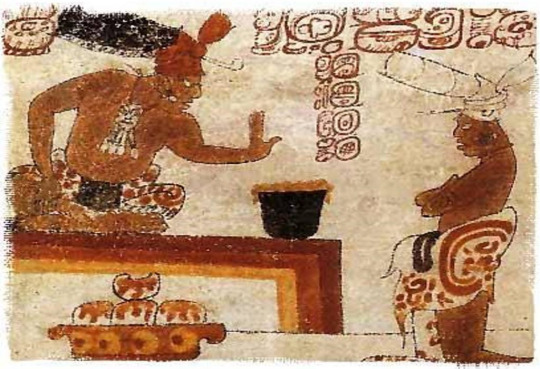
Additionally, the Mexica, also known as the Aztecs, used cacao beans as a form of currency. According to the Codex Mendoza, 4 1⁄2 hours of work was equivalent to 1 cacao bean. When a Mexica noble drank a cup of chocolate, they were literally drinking money, reinforcing their status as the elite.
Not only was cacao used to reinforce social hierarchies, but it was also used to connect mankind to the gods. In the Maya myth of origin, cacao was one of the primary ingredients used by the gods to create mankind, along with yellow corn, white corn, and paxtate. This link between humans and the gods was strengthened further with cacao’s importance in the continuation of the life cycle. In the Madrid Codex, the gods are displayed as watering cacao trees with their blood; when humans consume cacao, they are nourished by the gods. In order to nourish the gods in return, humans would offer chocolate and other foods to the gods during festivals like the Five Dangerous Days; these ceremonies were key in continuing it. Cacao trees also featured in the pantheon of sacred trees, trees which were responsible for holding up the sky and connecting it to the earth, acting as a pillar between the two realms.
Cacao held great significance in Mesoamerican society. As a result of cacao’s limited growing region and labor-intensive cultivation process, cacao was a limited commodity. This led to cacao being used to reinforce social hierarchies and connect mankind with the gods.
Works Cited
Castillo, Lorena. “The Most Surprising Chocolate Statistics and
Trends in 2024.” Gitnux.org, December 16, 2023.
Juarez-Dappe, Patricia. “Cacao Origins.” YouTube, August 21, 2020.
https://www.youtube.com/watch?v=y3NoKpG2PtU
Juarez-Dappe, Patricia. “Chocolate Encounters.” YouTube, August 26, 2020.
https://www.youtube.com/watch?v=G8BW-HHWI88
1 note
·
View note
Text
Chocolate Encounters: Mexica and Spaniards
When two civilizations clash for the first time, there is an inevitable exchange which takes place. Goods, ideals, and germs are all traded between the two peoples, and each is changed by the other. In many instances, such as the Spanish Conquest of the Mexica, one party is considered the “dominating” party. The dominating party often leaves a greater impression upon its counterpart in the exchange, but cacao can show us how the “conquered'' society has the ability to dominate the tastes of their conquerors. In the case of both the Mexica and the Spanish, cacao penetrated the tastes and preferences of the conquering nation so thoroughly that the product itself became native to the conquerors in its own way. In essence, chocolate colonized the tastes of civilizations that encountered it on the warpath.(1)
The Mexica are well known for their militaristic tendencies. Many civilizations across Mesoamerica learned firsthand how the Mexica could force them into submission, including the Mayans who were conquered by the Mexica around the twelfth to fifteenth century. The Mexica had previously never come into contact with cacao, but once they were introduced there was no going back. In noting that the Mexica demanded tribute from their conquered subjects, it could be said that the Mexica had greater influence in the exchange between themselves and their conquered subjects. However, in examining what it was that the Mexica demanded in those tributes, the lines become blurred. The Codex Mendoza contains a record of some required tributes that were collected and brought to the capital in Tenochtitlan. Among these shipments was nearly 10 million cacao beans every year from Soconusco, one of the highest producing cacao regions on the continent at that time. For a society who had never tasted it before, the Mexica had a clear desire for as much cacao as they could get their hands on.(2) The practice of chocolate-making seeped into the customs of the Mexica so thoroughly that when the Spanish arrived in the Americas, the Mexica found themselves in a similar position to the nations which they had previously conquered.
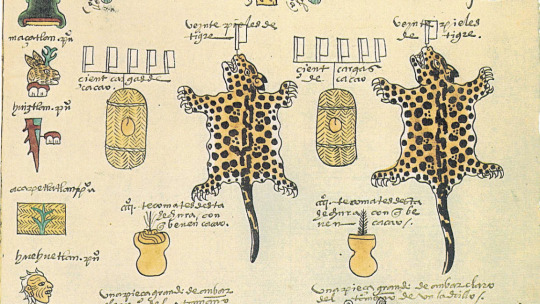
Hernan Cortes arrived in Mesoamerica with one goal above all else: profit. The Spaniards who made the journey to Tenochtitlan in the early 16th century saw amazing things they could not believe, so they naturally desired it for themselves. Among these things was, of course, cacao beans and chocolate beverages. Interestingly, the Spanish colonizers first sought to control the bean itself as a form of currency rather than sustenance, but it was not long before the use of cacao for chocolate beverages erupted in popularity with Spaniards. Though some found the drink to be bitter or unpleasant, Spanish men and women integrated chocolate into their diets for the supposed health benefits and to display status. In Mexica social settings, drinking of chocolate was reserved for the elites or the guests of the elites; when Cortés and his crew first arrived in Tenochtitlan, they were served chocolate in Moctezuma’s chambers as a demonstration of power by the Mexica ruler.(3) Spanish interest in cacao became so high that in 1585, the first shipment of cacao beans arrived in Europe packed with all of the common additions needed to make chocolate. The chocolate beverage which the Mexica had co-opted from their conquered subjects had once again found its way into the palette of the conquerors.
In Europe, chocolate served a uniformly nutritional purpose. The bitterness of the drink was once again received poorly, and the addition of honey and sugar became the standard for most recipes.(4) The Spanish colonizers had arrived in Mesoamerica with the intention of making money from this valuable crop. In Europe, however, where the raw cacao bean was not monetarily valued in the same way, chocolate was enjoyed purely as a product of the societal exchange which causes two civilizations to invariably change one another.
Between the Mexica’s adoption of chocolate practices and the evolution of chocolate as it traveled across the sea to Europe, it can easily be said that cacao has survived due to its compelling nature, enticing colonizers as both a currency and a confection. When examining this fact in the context of conquest, we can surmise how the tastes of the conquered will often influence the conqueror perhaps even more so than the inverse.
Patricia Juarez-Dappe, “Chocolate Encounters,” YouTube video, 37:27, August 26th, 2020, https://www.youtube.com/watch?v=G8BW-HHWI88
Juarez-Dappe, “Chocolate Encounters”
Harwich, Nikita. “The Chocolate Trade in Mexico Territory: from Aztec to Colonial Times.” Artes de México, No. 103, p. 76
Juarez-Dappe, “Chocolate Encounters”
0 notes
Text
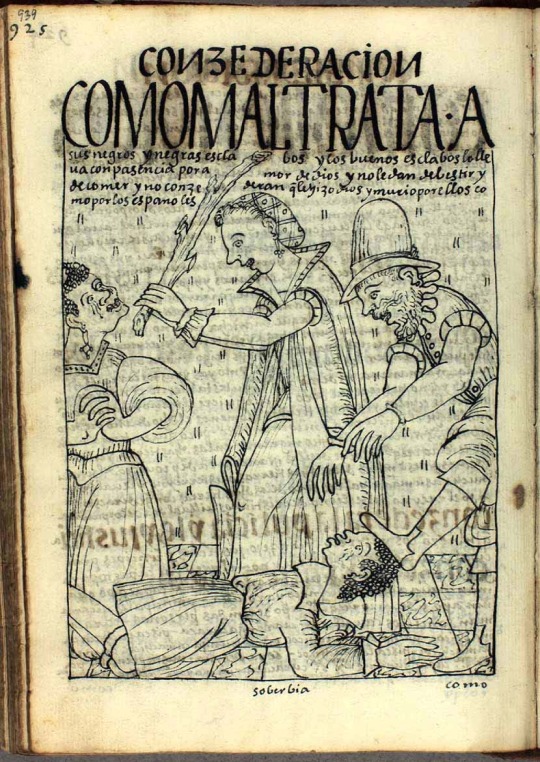
Transformation Production
How did the cacao production contribute to the expansion of capitalism? With the increased popularity and allure towards chocolate, the Europeans are in need of the chocolatey goodness even more than they could have believed when they were first introduced to the product. The transformation due to the consumption of chocolate brings a new age of production that Americans saw with tobacco and later cotton. You can find cacao being produced in areas twenty-three degrees above and below the equator which you can observe to be in tropical climates. Through the shift in elements of production, land labor, and capital, we could observe that cacao production contributes to the expansion of capitalism.
In Latin America, there were a number of systems for labor that took place in their agricultural systems such as encomiendas, the system of rewarding conquistadors tracts of land including the right to tax and extract labor from the Native People and in the seventeenth century, haciendas were introduced. This is where we can observe the implementation of the colonial plantation system where European powers such as Spain and later on other colonial nations established large scale cacao plantations in their overseas colonies in particular regions like Mesoamerica, Soconusco (Chiapas, Mexico), Tabasco (Mexico), Oaxaca (Mexico), the Yucatan Peninsula (Mexico) as well as Guatemala and Honduras. In these areas, we could see them being either oversaw on plantations like mentioned or as well as Haciendas. Haciendas, similar to Latifundio, are a result of the decline of the native population. With the decline of the native population, the economic value of encomiendas lost its importance as a source of economic revenue. Haciendas were categorized for being large estates normally owned by Spaniards and criollos or rarely by wealthy mixed-race individuals. With this kind of agricultural system in place we saw an increase in the production of cacao, but the most notable moment is when the landowners switched from native labor to enslaved labor. Enslaved labor was required when the native populations started to diminish, and the landowners needed people that could survive the harsh and strenuous working conditions of cacao productions. Enslaved African people transported through the Middle Passage were the key for the Spanish to rapidly increase the expansion of capitalism. Capitalism increased the most with the movement of enslaved people due to the vast amount of people they were able to exploit. They exploited these people just so they could become rich off their hard labor since they could not believe a Spaniards doing the same job “as those people.” As Americans, they treated the enslaved as well as the natives without any respect for their lives and livelihood.
Land and labor were not just the key points in the contribution of the expansion of capitalism for cacao production. Capital was the last major part. Capital can be a number of things, but in the perspective of cacao, the Spaniards are looking for more ways they can get their hands on it. And so, with the bringing of seedlings to other places outside of the Americas that could possibly grow these plants and so, we can see why there is a vast amount of cacao trees on the West African soil. The Spanish not only had to exploit their people on the Native Mesoamerican soil, but also on the West African soil where they are able to have a lot of hectares of cacao plantations. And there, they continue to exploit the people even to this day, but we’ll go over this in another category. The need for capital greatly contributed to the expansion of capitalism because the Spanish not only required a stupendous amount of cacao, but also wanted absolute control over the cash crop since they planned to take over the industry entirely. This control was so they can show that they have passed the Dutch and the Portuguese in their trading businesses and come out on top.
In conclusion, the cacao production contributed to the expansion of capitalism because of it becoming a cash crop that led to the need for more land and capital, and the need to use forced and exploited labor. Without these factors nor the vast interest in chocolate we may not have seen such a rapid expansion in capitalism that much. Capitalism needed cash crops such as cacao, sugar, tobacco, and cotton to rapidly force the market to need them and justify the need to exploit the people and the land those people live on.
Bibliography:
Lecture
The cacao economy of the eighteenth century Providence of Caracas and the Spanish cacao Market, Eugenio Pinero
0 notes